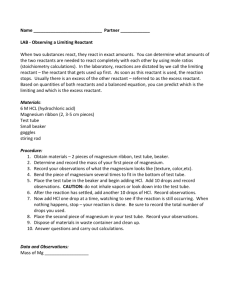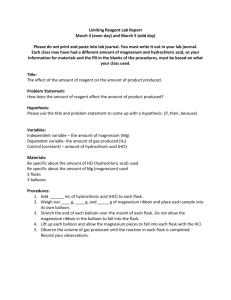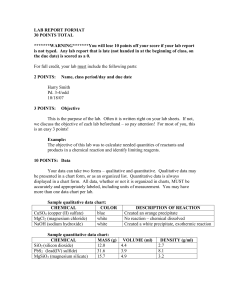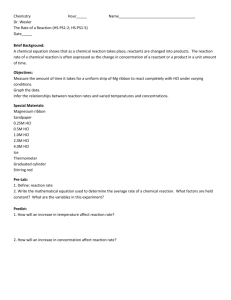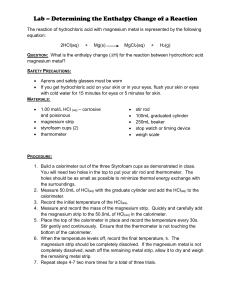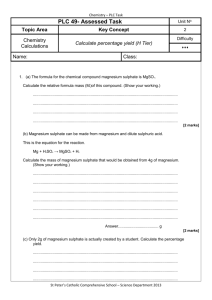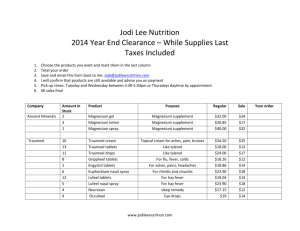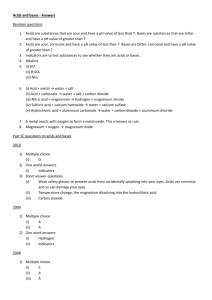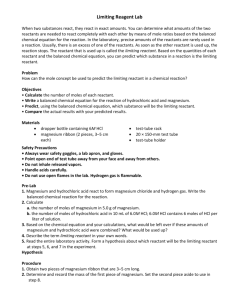Lab Demo Mg HCl Limiting Reactant - OISE-IS
advertisement
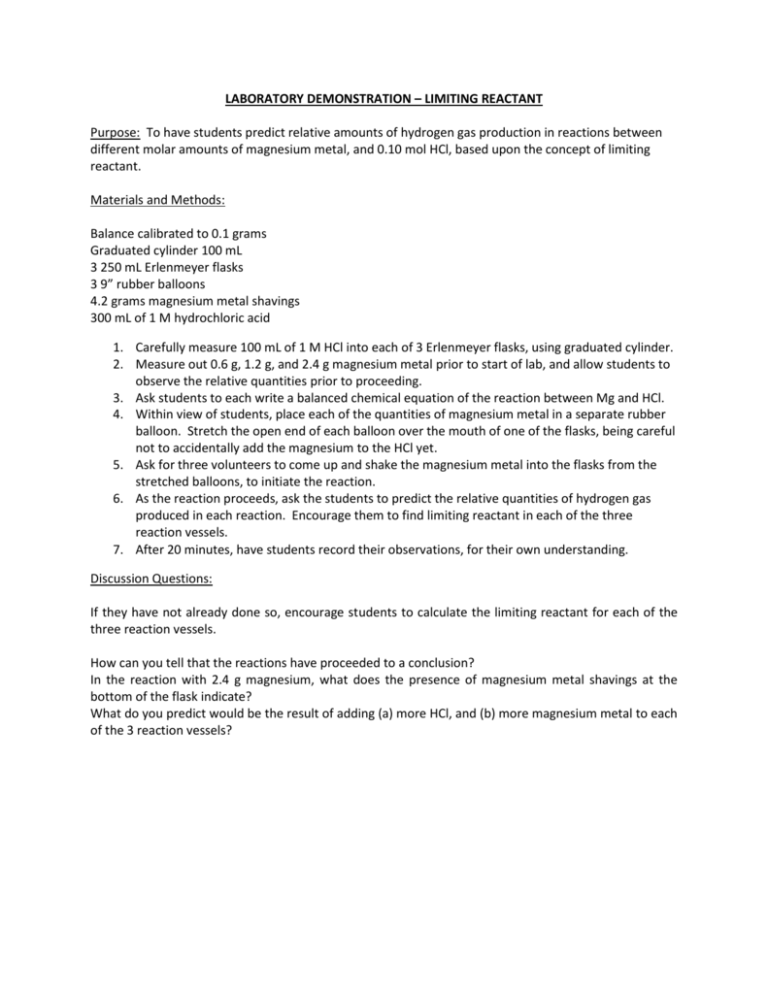
LABORATORY DEMONSTRATION – LIMITING REACTANT Purpose: To have students predict relative amounts of hydrogen gas production in reactions between different molar amounts of magnesium metal, and 0.10 mol HCl, based upon the concept of limiting reactant. Materials and Methods: Balance calibrated to 0.1 grams Graduated cylinder 100 mL 3 250 mL Erlenmeyer flasks 3 9” rubber balloons 4.2 grams magnesium metal shavings 300 mL of 1 M hydrochloric acid 1. Carefully measure 100 mL of 1 M HCl into each of 3 Erlenmeyer flasks, using graduated cylinder. 2. Measure out 0.6 g, 1.2 g, and 2.4 g magnesium metal prior to start of lab, and allow students to observe the relative quantities prior to proceeding. 3. Ask students to each write a balanced chemical equation of the reaction between Mg and HCl. 4. Within view of students, place each of the quantities of magnesium metal in a separate rubber balloon. Stretch the open end of each balloon over the mouth of one of the flasks, being careful not to accidentally add the magnesium to the HCl yet. 5. Ask for three volunteers to come up and shake the magnesium metal into the flasks from the stretched balloons, to initiate the reaction. 6. As the reaction proceeds, ask the students to predict the relative quantities of hydrogen gas produced in each reaction. Encourage them to find limiting reactant in each of the three reaction vessels. 7. After 20 minutes, have students record their observations, for their own understanding. Discussion Questions: If they have not already done so, encourage students to calculate the limiting reactant for each of the three reaction vessels. How can you tell that the reactions have proceeded to a conclusion? In the reaction with 2.4 g magnesium, what does the presence of magnesium metal shavings at the bottom of the flask indicate? What do you predict would be the result of adding (a) more HCl, and (b) more magnesium metal to each of the 3 reaction vessels?

